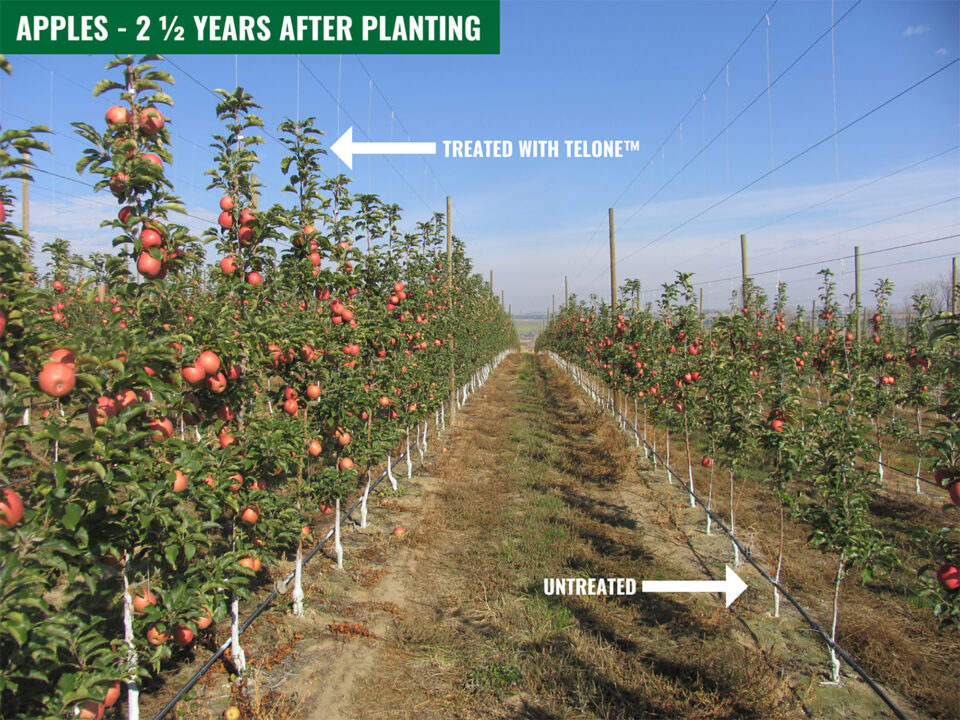Protect Melons From Whitefly-Transmitted Virus

Insecticide treatments are helpful to reduce whitefly numbers, which can, in turn, reduce the potential for transmission of the virus to young plants.
Photo courtesy of Bill Wintermantel
Cucurbit yellow stunting disorder virus (CYSDV) has been known to impact watermelon, melon, and squash. The virus was first detected in Arizona and Southern California in 2006, and has been a problem ever since.
It is transmitted by whiteflies, specifically the sweet potato whitefly — not the greenhouse whitefly. This pest is responsible for transmitting the virus over short distances, but healthy plants also can be infected through the movement of infected plants.
American Vegetable Grower caught up with USDA’s Jim McCreight and Bill Wintermantel, who are looking for CYSDV management options for growers. The two researchers are currently working on comparative evaluation and breeding of new sources of host plant resistance to CYSDV and sweet potato whitefly. They talked about the severity of the disease, the key points of their research, and how growers can best safeguard their melon and other cucurbit crops from this disease.
What is the current status of the disease in California?
McCreight and Wintermantel: CYSDV has virtually eliminated the fall melon crop in the low desert areas of California and Arizona since its emergence in 2006. The virus reduces Brix content in melon fruit, resulting in unmarketable melons. Yield losses in the fall result from a combination of whitefly feeding damage, which can lead to stunting or even death of plants, as well as CYSDV infection. The problem is less pronounced in the spring season due to limited whitefly pressure until later in the season when fruit is usually nearing maturity.
What role does weather play when determining whitefly populations

Bill Wintermantel
Wintermantel: The whitefly population is greatly affected by the winter season. In a cold winter, particularly when there are several days below freezing, whitefly populations are slow to emerge in the spring and the result is very limited CYSDV infection in the spring crop. Mild winters result in more whiteflies surviving the winter, and the larger whitefly numbers in spring seasons following mild winters lead to earlier CYSDV infections and larger numbers of infected melon plants during such seasons than following hard winters. Larger numbers of whiteflies increasing late in the spring season set the stage for a much larger whitefly population for the fall melons that are planted in July and August.
As it can take three to four weeks for plants to exhibit signs of infection, what can growers do to reduce the incidence of this disease before planting, during the growing season, and following the growing season?
Wintermantel: Growers need to eliminate known weed hosts of both CYSDV and whitefly when possible. Weed plants infected with CYSDV can be a source from which whiteflies acquire the virus and subsequently pass the virus to melon, watermelon, or squash plants.
Insecticide treatments are helpful to reduce whitefly numbers, which can, in turn, reduce the potential for transmission of the virus to young plants. Once the melons are harvested, the plants should be removed prior to planting another virus- or whitefly-susceptible crop in order to reduce whitefly movement from crop-to-crop and limit potential for movement of CYSDV from an infected crop into the following crop.
What are the key points, to date, of research on the whitefly and CYSDV host plant resistance project?
Wintermantel: CYSDV emerged in California, Arizona, and Sonora, Mexico, in the fall of 2006, affecting nearly all production regions. Severity of annual infection in the fall has virtually eliminated fall season production, and led to the establishment of epidemiological studies and identification and development of resistance sources by researchers at USDA-Agricultural Research Service (ARS) and collaborators at the University of California (UC) Extension and UC-Davis.
Prior to emergence in the Southwestern U.S., it was believed CYSDV only infected cucurbit crops (melon, watermelon, cucumber, squash, etc.). Studies at the USDA-ARS in Salinas, CA, demonstrated the virus can infect a limited number of non-cucurbit crops, and numerous weeds common in Southwestern melon production regions.
Many weed hosts are symptomless carriers of the virus and CYSDV can be acquired from these symptomless hosts by whiteflies and transmitted to melon and squash plants.

Jim McCreight
McCreight: Research in Spain, where CYSDV appeared in the 1990s, identified two sources of host plant resistance to CYSDV; both are vegetable-type melons from Zimbabwe.
In the Imperial Valley in California and Yuma, AZ, we identified resistance to CYSDV in a third vegetable-type melon, a land race from India. We have also identified potential new sources of resistance to CYSDV in other land races from India that produce fruit with sweet melon characteristics.
Research suggests that one melon source from Zimbabwe has the highest level of resistance found to date, but no varieties are immune.
It will take considerable time to combine the resistance from the vegetable melons with the sweet melon characteristics desired in Western U.S. shipping-type cantaloupe and honeydew melons. Resistance to the whitefly (feeding, egg-laying) is highly desirable, but to date, high-level resistance to the whitefly has not been identified. Whitefly control is absolutely essential.
3 Tips To Help Keep CYSDV Out Of Your Fields
JIM McCreight and Bill Wintermantel, USDA researchers working to find cucurbit yellow stunting disorder virus (CYSDV) management options for growers, offer a few tips to keep the virus out of your cucurbit crops.
1. Plant in fields isolated from other cucurbit crops and from alternate hosts of the whitefly.
2. Use spun-fabric row covers which can provide a physical barrier that protects young plants from emergence until they are larger. In turn, this reduces whitefly feeding, slows infection rates, and delays development of virus symptoms.
2. Eliminate known weed hosts of CYSDV and whitefly, and suppress whitefly populations. Coordinate timing of planting and harvesting to minimize potential movement of the virus from infected fields to newly emerged fields.










